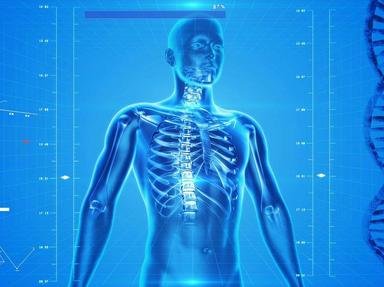Quiz Answer Key and Fun Facts
1. Let's begin our journey with the human brain. Along with the spinal column, the brain makes up the central nervous system. The brain is divided into three main parts; the cerebrum, the cerebellum, and the brain stem. The cerebral cortex can be found in which part?
2. The cerebral cortex is divided into four regions or lobes: temporal, occipital, parietal, and frontal. The hippocampus, responsible for long-term memory, is located in which lobe?
3. The human eye is a complex organ with many intricate parts. The lens, pupil, sclera, and cornea all play a role in how you see. You may have heard of the clear gel substance called the vitreous humor. What is the aqueous humor?
4. The main parts of the respiratory system include the nostrils, trachea, bronchi, lungs, alveolus, and diaphragm. What is the role of the bronchi?
5. Where is the angle of Louis located in the human body?
6. The circulatory system transports blood to all the cells in the body. This blood also carries vital nutrients and oxygen to the body's tissues. Through which large blood vessel does blood leave the heart?
7. Did you know that there are five types of white blood cells in the human body? They include eosinophils, monocytes, basophils and lymphocytes. Which of the following is the fifth type?
8. The digestive tract is a muscular tube that starts at the mouth and ends at the anus. The small and large intestines are part of the complex digestive system. The duodenum is the first part and the jejunum the central part of the small intestine. What is the last part known as?
9. The two main purposes of the urinary system is to filter the blood and get rid of waste products. Normally we each have two kidneys. The kidneys contain tiny filtering units that filter out waste and excess water to produce urine. What are these filtering units called?
10. The human body contains over 600 muscles. Muscles are broken down into three types: skeletal, cardiac, and what?
Source: Author
nmerr
This quiz was reviewed by FunTrivia editor
WesleyCrusher before going online.
Any errors found in FunTrivia content are routinely corrected through our feedback system.


